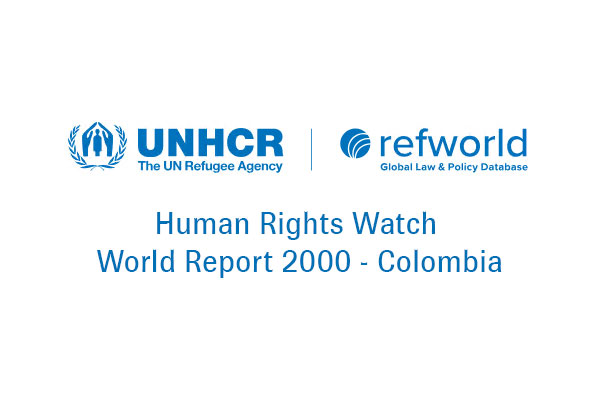Human Rights Watch World Report 2000 – Colombia – Refworld
Human Rights Developments
Armed conflict intensified in Colombia as negotiations between the government and guerrillas stalled. The administration of Andrés Pastrana was slow to develop a plan to improve human rights protections even as guerrillas used territory ceded to them not to talk peace, but to further war. Paramilitary groups working in some areas with the tolerance and open support of the armed forces continued to massacre civilians, commit selective killings, and spread terror. Guerrillas also flouted international humanitarian law, executing and kidnapping civilians and carrying out indiscriminate attacks. Throughout the country, Colombians fled political violence, with waning chances of finding refuge, food, and medical care. Repeatedly, the conflict crossed borders into Panama, Brazil, and Venezuela, heightening regional tensions and prompting talk of a future multilateral intervention.
The departments of Antioquia, Meta, Santander, and Bolivar remained among the most dangerous. Victims ran the gamut of Colombian society. In 1999, paramilitaries were considered responsible for 78 percent of the total number of human rights and international humanitarian law violations, according to the Colombian Commission of Jurists (Comisión Colombiana de Juristas, CCJ), a human rights group. For their part, guerrillas were credited with 20 percent. State forces were linked to 2 percent.
Some government officials claimed that the military's ties to paramilitary groups were severed and cited the low percentage of violations credited to state forces acting alone. However, the percentage does not reflect state forces that routinely assisted paramilitary atrocities. Indeed, cooperation between army units and paramilitaries remained commonplace. For instance, government investigators detailed direct collaboration between the Medellín-based Fourth Brigade and paramilitaries commanded by Carlos Castaño. Repeatedly, paramilitaries killed those suspected of supporting guerrillas, then delivered the corpses to the army. In a process known as "legalization," the army then claimed the dead as guerrillas killed in combat while paramilitaries received their pay in army weapons.
Source: https://www.refworld.org/reference/annualreport/hrw/1999/en/31014
